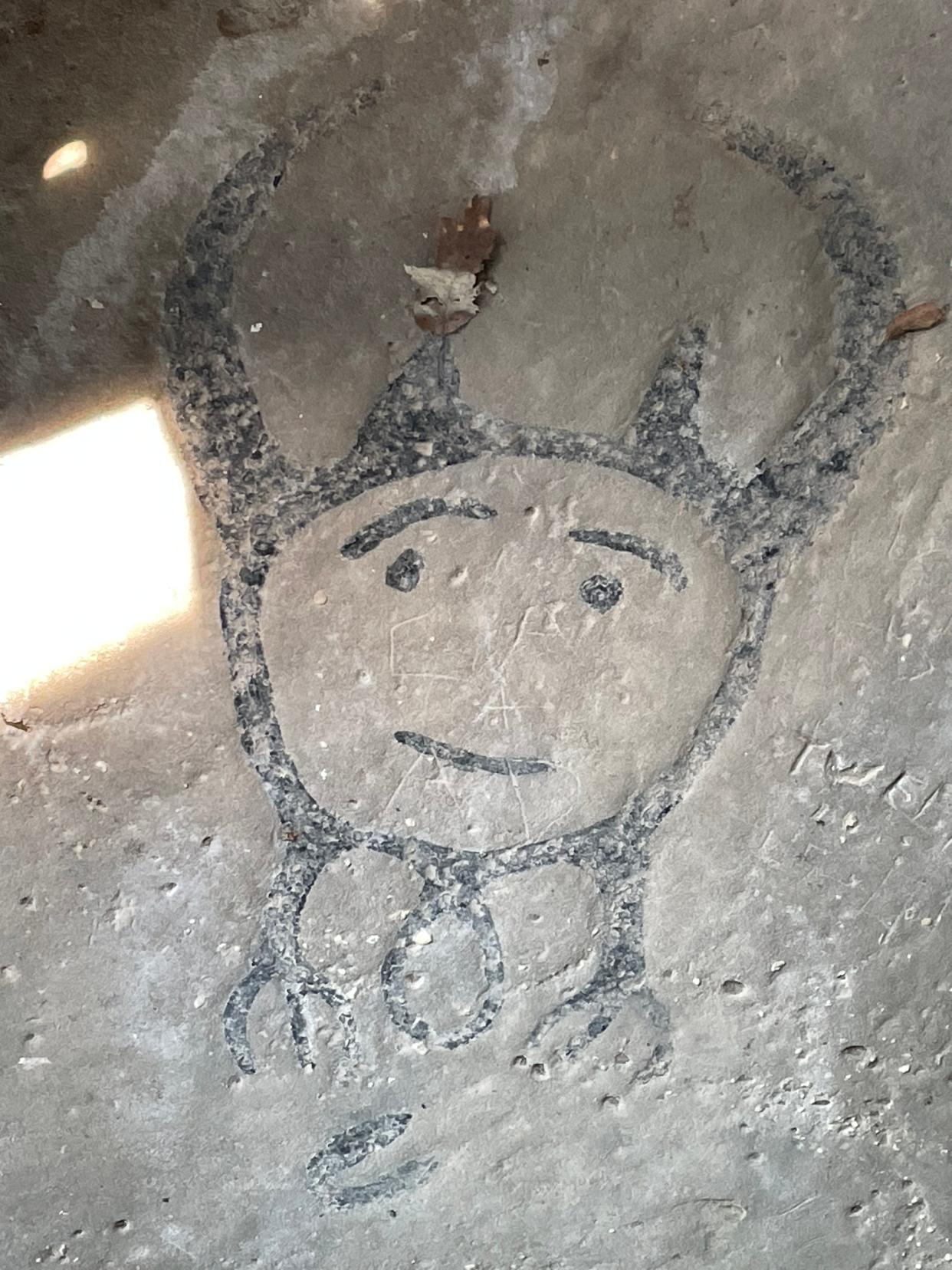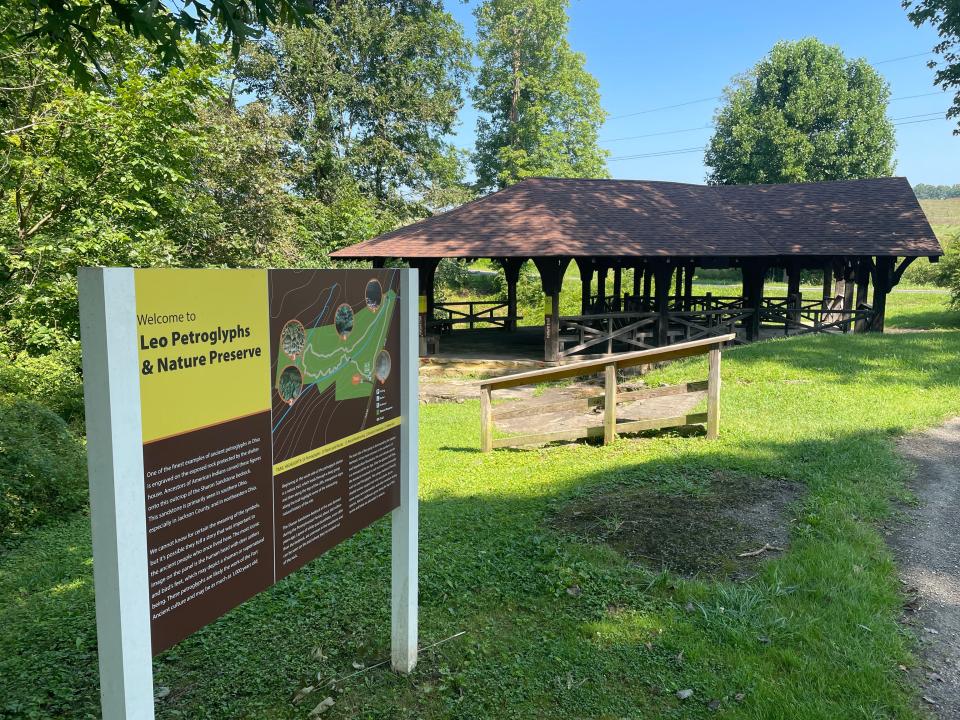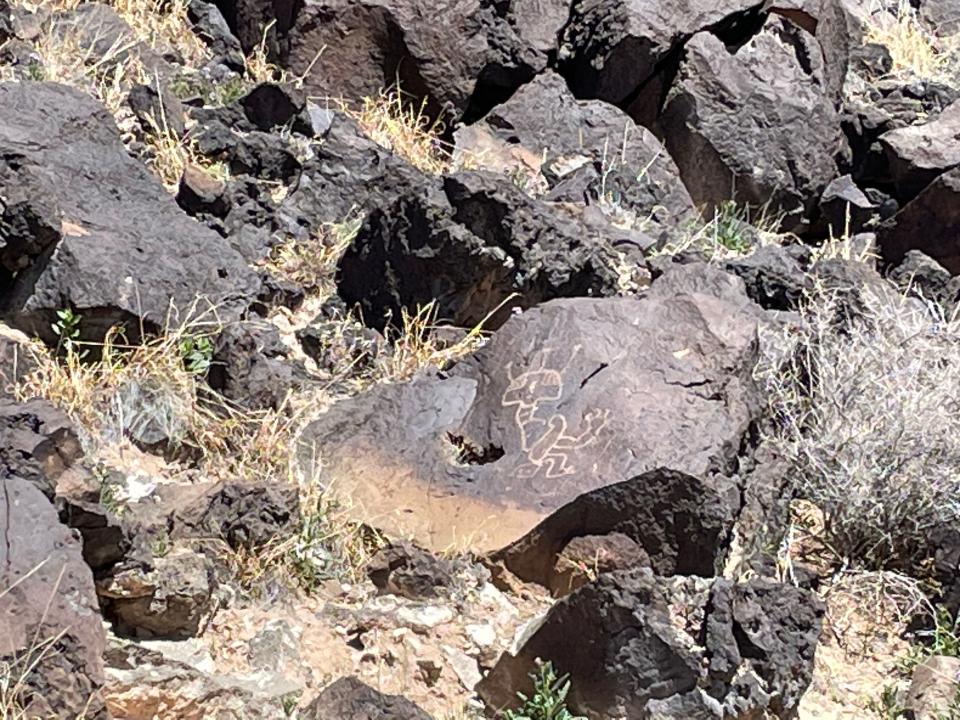Travel: Prehistoric drawings can be seen in Ohio at Leo Petroglyphs

Humans have always been eager to leave a creative mark on the world, tangible evidence of an artist’s thoughts or actions that might educate, entertain – or perhaps bewilder – current and future generations.
Humans hadn’t even made it to the Americas when the earliest-known cave paintings were created more than 40,000 years ago in what is now Indonesia.
But, millennia later, prehistoric Americans did make their mark. Ohio has several sites where early artists or scribes left enduring evidence of their creativity.
Spring getaways: State Park lodges make perfect destinations for families, couples
The state’s most well-known group of petroglyphs – prehistoric stone carvings – is probably Leo Petroglyphs and Nature Preserve in Jackson County, about 75 miles southeast of Columbus. (The site gets its name from the nearby village of Leo, not from one of the prehistoric artists.)
A large slab of relatively soft sandstone served as a canvas for the artists, who probably belonged to the Fort Ancient culture, a people who also may have created Ohio’s Serpent Mound (not to mention the earthworks for whom the culture is named).
Among the carvings are figures that seem to represent people, human footprints, birds and other animals, and a few enigmatic symbols.

Whether or not the carvings were meant to represent specific ideas, instructions or just the creative musings of the carvers is still a matter of speculation.
Erosion of the carvings dates their creation to around 1,000 years ago. Today, the carvings are protected by a modern shelter house that also provides a roof for visiting picnickers.
The nature preserve at Leo Petroglyphs protects about 20 acres, including a gorge where stone outcroppings contain other stone carvings.
A ½-mile trail makes a loop around the gorge, beginning and ending at the shelter house.
The wooded hike takes about 30 minutes and provides a glimpse of the kind of landscape that might have inspired those early artists along their way to and from the petroglyph stone.
Another well-known and easily visited example of early Ohio petroglyphs is at Inscription Rock on Kelleys Island in Lake Erie.
The rock, on the south shore of the island near the Kelleys Island Ferry landing, was partially buried when discovered by early settlers in 1833.
More: 7 small Ohio towns and villages perfect for your next day trip
The site is probably not as old as the Leo Petroglyphs, dating from perhaps 800 years ago.
Although Inscription Rock is also protected by a modern shelter, the rock has been so eroded that it’s hard to clearly see the carvings today. But an informational display at the site includes a depiction of the stone from a drawing made in 1850, showing more strange and enigmatic figures, animals and symbols that should provide a satisfying puzzle for any aspiring amateur archeological cryptographers.
Visitors to Kelleys Island should also be sure to visit Glacial Grooves Geological Preserve, an example of Mother Nature’s own artistry, carved by massive boulders dragged by glaciers during the last Ice Age.

Travelers who find themselves fascinated by ancient rock carvings should consider a trip to the American West, where several large sites display a vast array of petroglyphs covering a vast span of history.
One of the most popular and accessible destinations is Petroglyphs National Monument, just a few miles outside downtown Albuquerque, New Mexico, where visitors can see one of the largest petroglyph sites in North America.
Short trails lead visitors past designs, both strange and familiar, carved into volcanic rocks strewn about like cyclopian Legos.
The carvings at the national monument are probably a bit younger than the Ohio sites and are credited to both Native Americans and early Spanish settlers from between 400 to 700 years ago.
Steve Stephens is a freelance travel writer and photographer. Email him at sjstephensjr@gmail.com.
This article originally appeared on The Columbus Dispatch: Travel: Prehistoric stone carvings can be found in southeast Ohio

